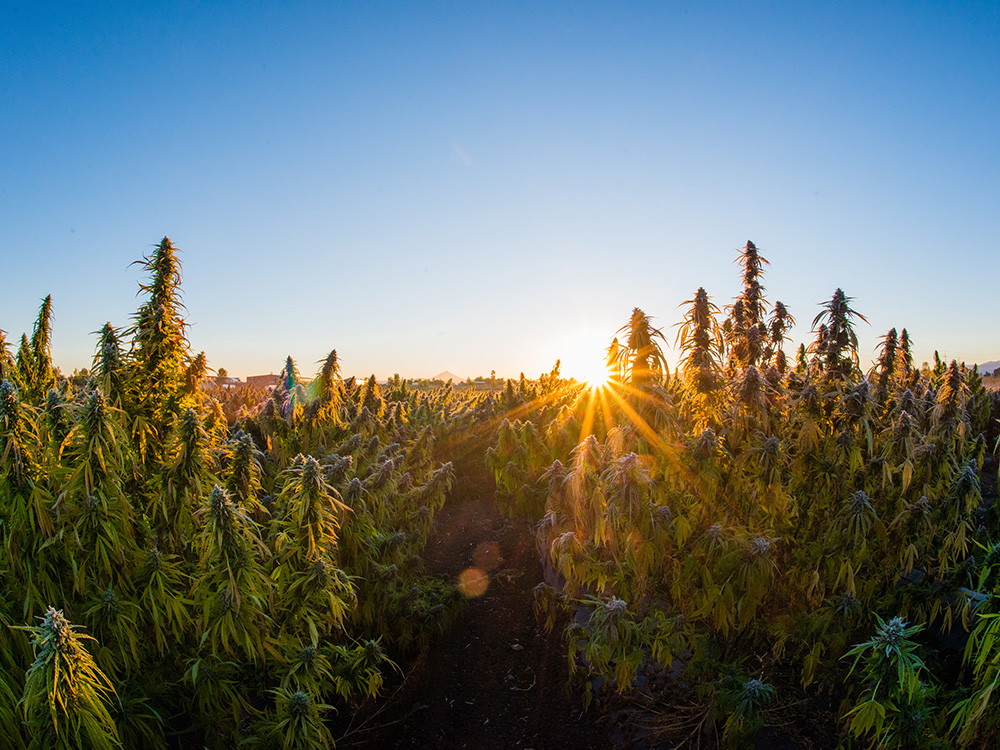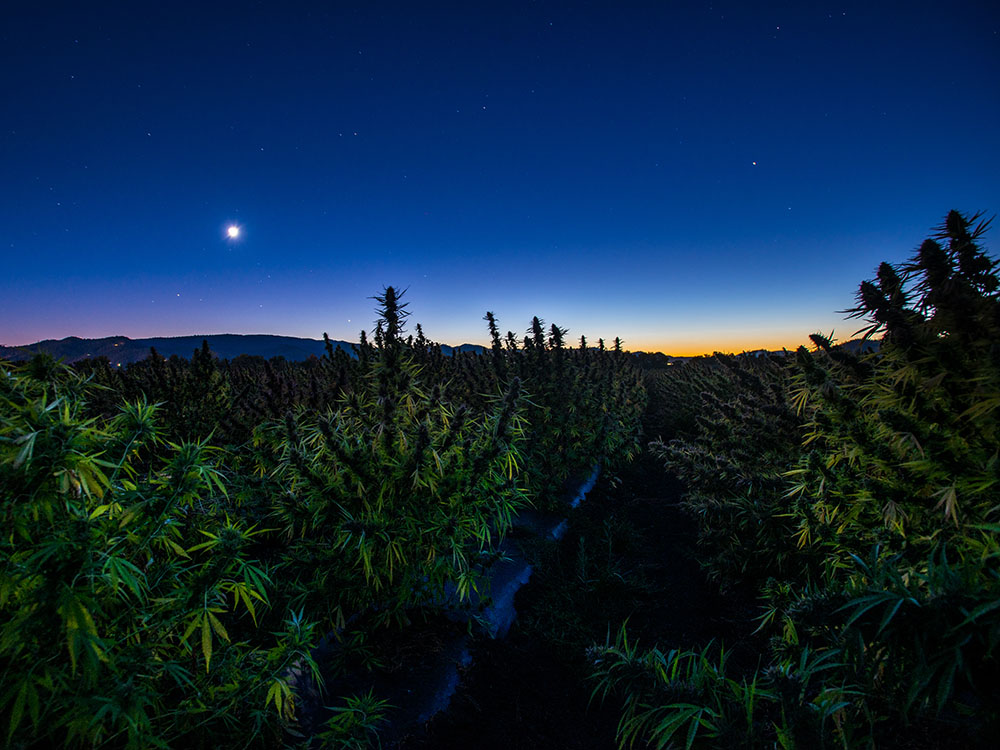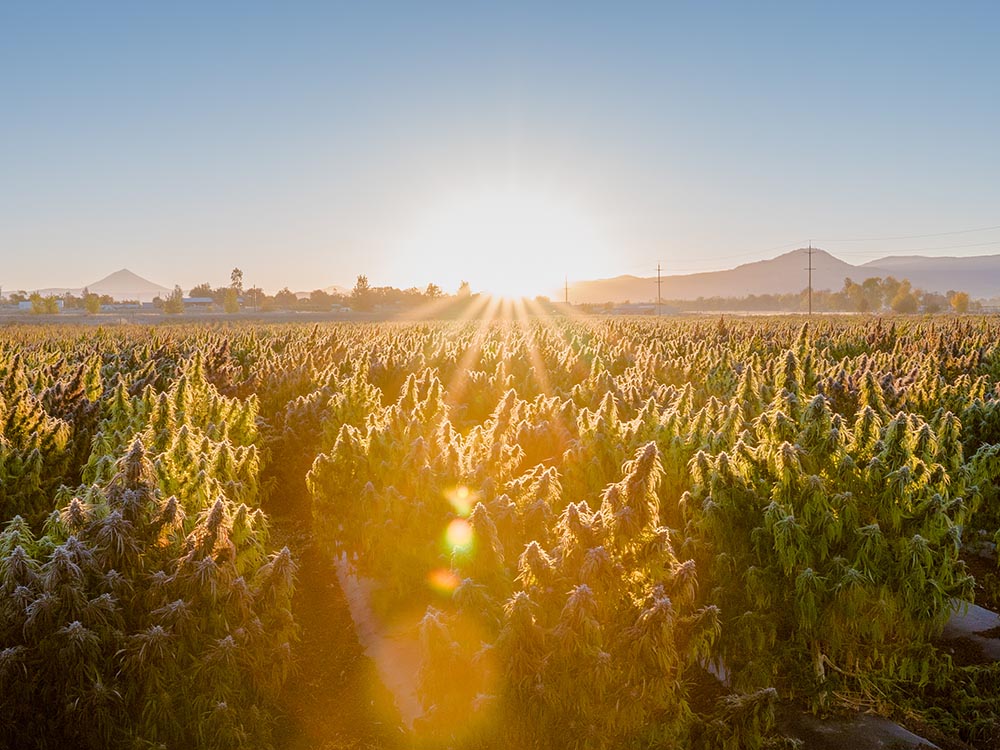The CEO of a Southern Oregon hemp company explains why the region is primed to gain global notoriety for high-quality hemp production.
Wine from Burgundy, perhaps the most esteemed among the oldest wine-growing regions of France, is so treasured that the Burgundy name has become better known as a brand than a name for the land itself.
Like the wine varieties produced in Burgundy, the hemp products harvested from the lush, green fields of Southern Oregon will soon become synonymous with the highest levels of artisanal quality. Products derived from hemp, unlike those made from marijuana plants, are allowed to freely cross state lines, thanks to changes included in the most recent U.S. Farm Bill. As a result, the region hemp products are grown in will soon become an increasing indicator of quality for consumers.
There are a few simple reasons why the quality of Oregon’s hemp is superior.

Oregon Has the Perfect Growing Conditions for Hemp
The most important factors influencing the quality of any crop are the natural conditions inherent in the land where it grows. For the producers of fine French wine, this delicate mix of topography, soil and climate is called “terroir.” It’s the delicate balance that separates the top-quality grapevines from those that yield produce unworthy of the region’s sterling reputation. For hemp growers, the “terroir” of the Oregon landscape is hard to match.
The famously damp climate of the Pacific Northwest is not the reason that growing conditions for hemp are so perfect here. In fact, a growth cycle that neatly dodges all that heavy moisture may be the key to its success. The cannabis plant thrives on the warm days and cool nights of Oregon’s spring and summer months. Our hemp’s root systems respond spectacularly to the decreased soil temperatures of cooler evenings, which allow them to take in more nutrients. Big, healthy fields of feminized hemp thrive outdoors in river valleys protected by adjacent mountain ranges.
In the ground by late May and brought to harvest in mid-September, the hemp plants thrive in Oregon’s dry, sunny summers. From seed to stalk, they complete their full growth cycles, coddled at every step by an environment that perfectly meets their needs.

Oregon’s Experienced Cultivators Are Embracing Hemp
Apart from an ideal landscape, the vineyards of Burgundy are distinguished by centuries of experience and tradition. Though disruptive legislation paused legal cannabis cultivation for decades, the history of cannabis in the Pacific Northwest far predates the end of official prohibition.
Hemp in Oregon dates back to the wagon-train settlers of the 19th century, though commercial growth fell dormant due to state and federal bans. In a resurgence fueled by the countercultural ideals of the 1960s, rural Oregon became a hotbed for communally farmed hemp. Eugene resident Bill Drake’s 1970 publication of “The Cultivator’s Guidebook of Marijuana”, the first cannabis how-to ever published in the United States, became an enduring artifact of the underground economy that persisted in the region for decades. Medical marijuana was legalized in Oregon in 1998, and adult-use cannabis legislation followed in 2014.
The hopes of an enduring agricultural boom for cannabis in Oregon have been tempered by some harsh economic realities. An expanding wave of legal cultivation has led to overproduction in the state, causing steep, persistent price drops for marijuana in a market where overall sales numbers continue to rise. It’s a problem that can’t be compensated by increased scale, as rapid growth is governed by acreage limits set out in state marijuana licensing. This has left a highly skilled workforce of cannabis cultivators, looking to apply their unique knowledge towards a comparable crop with fewer restrictions in place.
High-quality hemp, grown to much bigger scale, could be a more profitable answer for many. Rather than a micro-agricultural niche, hemp has the potential to become one of the region’s core crops.

Oregon Hemp Is Heavily Tested
The purity of Oregon’s hemp crop is lab tested to more exacting standards than most other regions of the United States, with rules that far surpass those of other major global hemp producers, such as China.
If pesticides or other ground contaminants are present, hemp plants can be unusually affected. All types of cannabis plants are particularly adept at sucking toxins from the soil. So adept that they’re often used as a sort of reset crop to lower the toxicity of previously contaminated land. (Hemp plants have been the most successful method for remediating the soil at the site of the Chernobyl nuclear disaster!) Our hemp-growing land has been converted primarily from former grazing pastures, there’s less risk of a lingering pesticide presence remaining from years spent producing less-regulated crops.
In 2017, the Oregon State Legislature created a new reality for testing in the state with the passage of ORS 571.330. Where hemp plants were previously regulated with looser rules than psychoactive marijuana, this “revised statute” brought the two cannabis cousins under similar regulation. Under the new rules, Oregon’s hemp plants are now tested for “food-grade” quality and strictly screened for traces of 70 different types of pesticides and contaminants. As CEO of Hemptown USA, I’m proud to say that our laboratories take that even further, screening for 250 varieties.
It’s the perfect conditions and expert growers that produce the country’s best hemp crop, the tests just confirm it. For those who care where the products they use come from, and how they were made, “Grown in Oregon” is a promise of the utmost quality.

